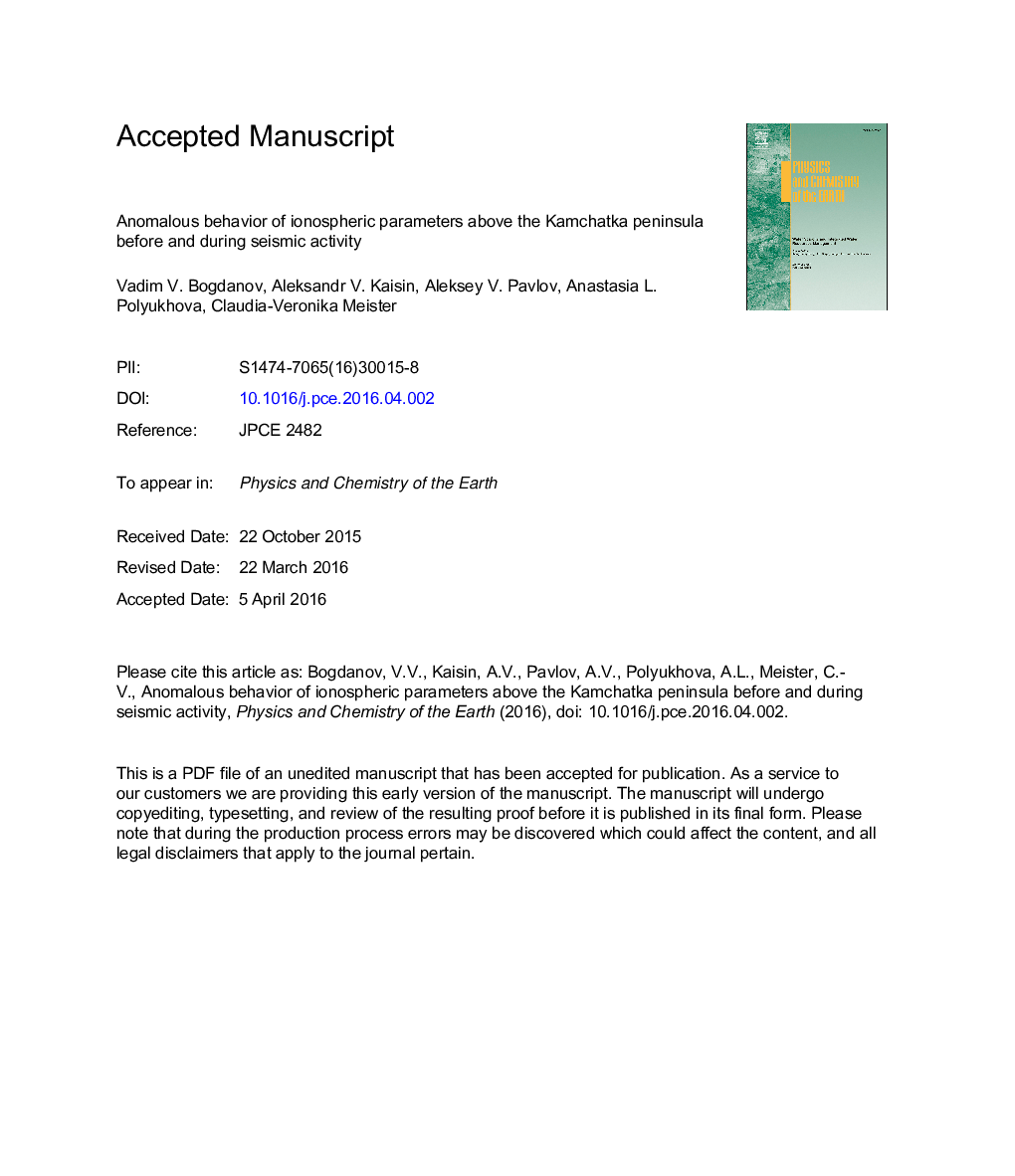| Article ID | Journal | Published Year | Pages | File Type |
|---|---|---|---|---|
| 5784616 | Physics and Chemistry of the Earth, Parts A/B/C | 2017 | 12 Pages |
Abstract
In the present work, searching for new methods of earthquake prediction, variations of ionospheric plasma parameters and ionospheric turbulence before and during seismic activity are studied applying complex radiophysical methods and a theoretical probabilistic approach. The analysis of radiophysical observations of some seismic events of February-March (28.02.-02.03.) 2013 shows, that K-layer formation (appearance of a corpuscular layer due to precipitation of particles from the radiation belts), Es- and F-spread effects as well as an increase of the critical foF2-frequency occurred about one day before earthquakes with a magnitude M â¥Â 6.5. F2-spread was even observed at low geomagnetic activity. One seismic shock was preceded by an abnormal increase in the value of the critical frequency foF2, and about 2 h after the shock, foF2 was again well below the median value although a geomagnetic storm happened. Therefore, it may be concluded that, in future, variations of ionospheric plasma parameters and turbulence may be used as additional tool to determine the magnitude of preparing strong earthquakes. The propabilistic method which is applied in the present work is already described in (Bogdanov et al., J. Volcanology and Seismology, 4(6), 412-422, 2010). It allowed to detect a growth of seismic activity in the Kamchatka region in 2013.
Keywords
Related Topics
Physical Sciences and Engineering
Earth and Planetary Sciences
Geochemistry and Petrology
Authors
Vadim V. Bogdanov, Aleksandr V. Kaisin, Aleksey V. Pavlov, Anastasia L. Polyukhova, Claudia-Veronika Meister,
